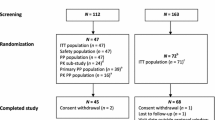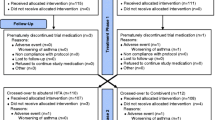Abstract
Levalbuterol, the pure (R)-isomer of racemic albuterol, is a new therapeutic option for patients with asthma. Racemic albuterol comprises a 50:50 mixture of (R)- and (S)-albuterol, with (R)-albuterol conferring all of the bronchodilator effects of the racemate. Numerous preclinical and in vitro studies have indicated that (S)-albuterol is not an inert isomer, but may have proinflammatory effects. Results from clinical trials in adults and children with asthma have demonstrated that 0.63 mg levalbuterol provides effective bronchodilation with lower β-mediated side effects compared with 2.5 mg racemic albuterol. In the emergency department, levalbuterol provided greater bronchodilation and significantly reduced hospital admissions compared with racemic albuterol. Recent studies have supported that levalbuterol use in acute settings may reduce the cost of asthma treatment by decreasing the total treatments and subsequent respiratory therapy resources. Levalbuterol provides heath care professionals with a safe, effective, and potentially cost-saving alternative to racemic albuterol for the treatment of patients with asthma.
Similar content being viewed by others
References and Recommended Reading
Bullowa J, Kaplan D: On the hyperdermic use of adrenalin chloride in the treatment of asthmatic attacks. Med News 1903:63–66.
Sly RM: New guidelines for diagnosis and management of asthma. Ann Allergy 1997, 78:427–437.
Nelson HS: b-adrenergic bronchodilators. N Engl J Med 1995, 333:499–506.
McCarren M, Zalenski R, McDermott M, Kaur K: Predicting recovery from acute asthma in an emergency diagnostic and treatment unit. Acad Emerg Med 2000, 7:28–35.
Ducharme F, Kramer M: Relapse following emergency treatment for acute asthma: Can it be predicted or prevented? J Clin Epidemiol 1993, 46:1395–1402.
Newcomb R, Akhter J: Outcomes of emergency room visits for asthma. I. Patient determinants. J Allergy Clin Immunol 1986, 77:309–315.
Emerman C, Woodruff P, Cydulka R, et al.: Prospective multicenter study of relapse following treatment for acute asthma among adults presenting to the ED. MARC investigators. Multicenter Asthma Research Collaboration. Chest 1999, 115:919–927.
Emerman C: Relapse following treatment of acute asthma in the ED. J Asthma 2000, 37:701–708.
Hartley D, Middlemiss D: Absolute configuration of the optical isomers of salbutamol. J Med Chem 1971, 14:895–899.
Lotvall J, Palmqvist M, Arvidsson P, et al.: The therapeutic ratio of R-albuterol is comparable with that of RS-albuterol in asthmatic patients. J Allergy Clin Immunol 2001, 108:726–731.
Frieri M: Clinical and basic science research on allergic rhinitis and asthma from Nassau University Medical Center. Allergy Asthma Proc 2001, 22:162–172.
Cho S, Hartleroad J, Oh C: (S)-albuterol increases the production of histamine and IL-4 in mast cells. Int Arch Allergy Immunol 2001, 124:478–484.
Mitra S, Ugur M, Ugur O, et al.: (S)-albuterol increases intracellular free calcium by muscarinic receptor activation and a phospholipase C-dependent mechanism in airway smooth muscle. Mol Pharmacol 1998, 53:347–354.
Templeton A, Chapman I, Chilvers E, et al.: Effects of S-salbutamol on isolated human bronchus. Pulm Pharmacol Ther 1998:1-6.
Yamaguchi H, McCullough JR: S-albuterol exacerbates calcium responses to carbachol in airway smooth muscle cells. J Allergy Clin Immunol 1996, 14:47–55.
Nelson H, Bensch G, Pleskow W, et al.: Improved bronchodilation with levalbuterol compared to racemic albuterol in patients with asthma. J Allergy Clin Immunol 1998, 102:943–952. The first large, well-designed comparative efficacy study in patients aged 12 years and older with chronic, stable asthma. This study demonstrated that levalbuterol 0.63 mg was as effective as racemic albuterol 2.5 mg, and that levalbuterol 1.25 mg produced the largest pulmonary function changes, especially in patients with lower baseline FEV1.
Milgrom H, Skoner D, Bensch G, et al.: Low-dose levalbuterol in children with asthma: safety and efficacy compared with placebo and racemic albuterol. J Allergy Clin Immunol 2001, 108:938–945. The first large, well-controlled, comparative efficacy study in pediatric patients aged 4 to 11 years with chronic, stable asthma. This study demonstrated that lower doses of levalbuterol (0.31 and 0.63 mg) were clinically comparable with racemic albuterol 2.5 mg, whereas lowering the dose of racemic albuterol to 1.25 mg resulted in reduced efficacy. Beta-mediated changes in heart rate and glucose were not different from placebo for patients who received levalbuterol 0.31 mg.
Gawchik S, Saccar C, Noonan M, et al.: The safety and efficacy of nebulized levalbuterol compared with racemic albuterol and placebo in the treatment of asthma in pediatric patients. J Allergy Clin Immunol 1999, 103:615–621.
Penn R, Frielle T, McCullough J, et al.: Comparison of R-, S-, and RS-albuterol interaction with human b1- and b2-adrenergic receptors. Clin Rev Allergy Immunol 1996, 14:37–45.
Qureshi F, Pestian J, Davis P, Zaritsky A: Effect on nebulized ipratropium bromide on the hospitalization rates of children with asthma. N Engl J Med 1998, 339:1030–1035.
Lin R, Pesola G, Bakalchuk L, et al.: Superiority of ipratropium plus albuterol over albuterol alone in the emergency department management of adult asthma: a randomized clinical trial. Ann Emerg Med 1998, 21:208–213.
Munoz N, Vita A, Neeley S, et al.: Beta adrenergic modulation of formyl-methionine-leucine-phenylalanine-stimulated secretion of eosinophil peroxidase and leukotriene C4. J Pharmacol Exper Ther 1994, 268:139–143.
Barnes P: Effect of b-agonists on inflammatory cells. J Allergy Clin Immunol 1999, 104:S10-S17.
Leff AR, Herrnreiter A, Naclerio RM, et al.: Effect of enantiomeric forms of albuterol on stimulated secretion of granular protein from human eosinophils. Pulm Pharmacol Ther 1997, 10:97–104.
Volchek G, Gleich G, Kita H: Pro- and anti-inflammatory effects of beta adrenergic agonists on eosinophil response to IL-5 [abstract]. J Allergy Clin Immunol 1998, 101(suppl):S35.
Ramsay C, Cowan J, Flannery E, et al.: Bronchoprotective and bronchodilator effects of single doses of (S)-salbutamol, (R)-salbutamol and racemic salbutamol in patients with bronchial asthma. Eur J Clin Pharmacol 1999, 55:353–359.
Perrin-Fayolle M: Salbutamol in the treatment of asthma [letter]. Lancet 1995, 346:1101.
Cockcroft DW, Swystun VA: Effect of single doses of S-salbutamol, R-salbutamol, racemic salbutamol, and placebo on the airway response to methacholine. Thorax 1997, 52:845–848.
Gumbhir-Shah K, Kellerman D, DeGraw S, et al.: Pharmacokinetics and pharmacodynamics of cumulative single doses of inhaled salbutamol enantiomers in asthmatic subjects. Pulm Pharmacol Ther 1999, 12:353–362. Well-designed pharmacokinetic study demonstrating that all of the pharmacodynamic effects are due to (R)-albuterol, and that (S)-albuterol is metabolized much more slowly than (R)-albuterol.
Gumbhir-Shah K, Kellerman D, DeGraw S, et al. __Pharmacokinetic and pharmacodynamic characteristics and safety of inhaled albuterol enantiomers in healthy volunteers. J Clin Pharmacol 1998, 38:1096–1106.
Eaton E, Walle U, Wilson H, et al.: Stereoselective sulfate conjugation of salbutamol by human lung and bronchial epithelial cells. Br J Clin. Pharmacol 1996, 41:201–206.
Walle T, Eaton E, Walle U, Pesola G: Stereoselective metabolism of RS-albuterol in humans. Clin Rev Allergy Immunol 1996, 14:101–113.
Boulton D, Fawcett J: Enantioselective disposition of albuterol in humans. Clin Rev Allergy Immunol 1996, 14:115–138.
Boulton DW, Fawcett JP: Pharmacokinetics and pharmacodynamics of single oral doses of albuterol and its enantiomers in humans. Clin Pharmacol Ther 1997, 62:138–144.
Lipworth BJ, Clark DJ, Koch P, Arbeeny C: Pharmacokinetics and extrapulmonary b2 adrenoceptor activity of nebulised racemic salbutamol and its R and S isomers in healthy volunteers. Thorax 1997, 52:849–852.
Dhand R, Goode M, Reid R, et al.: Preferential pulmonary retention of (S)-albuterol after inhalation of racemic albuterol. Am J Respir Crit Care Med 1999, 160:1136–1141. Pharmacokinetic study concluding that (S)-albuterol is retained in the lung.
Haider D: Levalbuterol affords superior health and cost benefit over racemic albuterol in the emergency department [abstract]. Respir Care 2001, 46:1081. Open-label study indicating that levalbuterol use in the ED provided greater bronchodilation and a cost advantage compared with racemic albuterol.
Nowak R, Emerman C: Levalbuterol is effective in acute asthma [abstract]. Am J Respir Crit Care Med 2001, 163(suppl):A590. Open-label, dose-escalation, pilot emergency department study demonstrating that levalbuterol 0.63 mg was clinically comparable with racemic albuterol 2.5 and 5 mg, and that levalbuterol 1.25 mg produced significantly more bronchodilation than did either of the preceding treatments.
Truitt T, Witko J, Halpern M: Levalbuterol compared to racemic albuterol: efficacy and outcomes in patients hospitalized with chronic obstructive pulmonary disease or asthma. Chest 2003, 123(In press). Retrospective chart review that demonstrated that switching to levalbuterol 1.25 mg as the standard of care for patients with asthma and chronic obstructive pulmonary disease resulted in a significant reduction in the total number of doses administered, a significant reduction in the cost of bronchodilator therapy, a reduction in length of stay of almost 1 day, and a reduction in the cost of care of approximately $550.
Carl J, Myers T, Kercsmar C: Comparison of levalbuterol and racemic albuterol for treatment of acute asthma in pediatric patients [abstract]. Chest 2001, 120:137S. This was a very large (n = 557) double-blind, randomized study comparing levalbuterol 1.25 mg to racemic albuterol 2.5 mg in a pediatric ED using a standardized asthma care algorithm in patients aged 1 to 18 years. Significantly fewer patients treated with levalbuterol required hospital admission compared with those treated with racemic albuterol (37% vs 45%; P = 0.05).
Emerman C, Nowak R: Inverse correlations between (S)-albuterol levels and FEV1 in the emergency department [abstract]. Acad Emerg Med 2002, 9:404. This abstract describes post hoc analyses of drug levels obtained from patients who participated in the study described in the study by Nowak and Emerman [38•]. Regression analysis indicated that high levels of (S)-albuterol in patients presenting to the ED were inversely associated with FEV1 upon entry and change in FEV1 after three doses of β-agonist.
McDowell K, Chatburn R, Myers T, et al. __A cost-saving algorithm for children hospitalized for status asthmaticus. Arch Pediatr Adolesc Med 1998, 152:977–984.
Asmus M, Hendeles L: Levalbuterol nebulizer solution: Is it worth five times the cost of albuterol? Pharmacotherapy 2000, 20:123–129.
Ahrens R, Weinberger M: Levalbuterol and racemic albuterol: Are there therapeutic differences? J Allergy Clin Immunol 2001, 108:681–684.
Lewis M, Harris S, Campbell S, et al.: Improving resource utilization with new technologies [abstract]. Respir Care 2000, 45:981.
Pikarsky R, Acevedo R: Clinical and economic impact resulting from a hospital-wide conversion from racemic albuterol to levalbuterol [abstract]. Chest 2002, 122:25S. This abstract confirms the findings of Truitt et al. [39••]. The study was conducted prospectively, although not in a blinded manner. Use of levalbuterol resulted in a decrease in the number of nebulized β-agonists administered, a decrease in the number of breakthrough treatments, and a net savings of $42,000.
Pikarsky R, Acevedo R, Roman C, Farrell T: Comparison in rates of breakthrough treatments during a conversion from racemic albuterol to levalbuterol [abstract]. Chest 2002, 122:146S.
Truitt T, Witko J, Kotter S, Gordon I: Levalbuterol reduces total and breakthrough treatments in hospitalized patients. Am J Respir Crit Care Med 2000, 161:A553.
Asmus M, Hendeles L, Weinberger M, et al.: Levalbuterol has not been established to have therapeutic advantage over racemic albuterol [letter]. J Allergy Clin Immunol 2002, 110:325.
Chowdhury B: Comparative efficacy of levalbuterol and racemic albuterol in the treatment of asthma [letter]. J Allergy Clin Immunol 2002, 110:324.
Milgrom H, Skoner D, Bensch G, et al.: Reply. J Allergy Clin Immunol 2002, 110:325–328. The responses to a letter to the editor address many of the criticisms presented in other editorials, and specifically address the issue of dose response.
Schreck D, Brotea C, Shah S: Comparison of racemic albuterol and levalbuterol in the treatment of acute asthma [abstract]. Ann Emerg Med 2001, 38:S10.
Author information
Authors and Affiliations
Rights and permissions
About this article
Cite this article
Nowak, R. Single-isomer levalbuterol: A review of the acute data. Curr Allergy Asthma Rep 3, 172–178 (2003). https://doi.org/10.1007/s11882-003-0031-8
Issue Date:
DOI: https://doi.org/10.1007/s11882-003-0031-8




